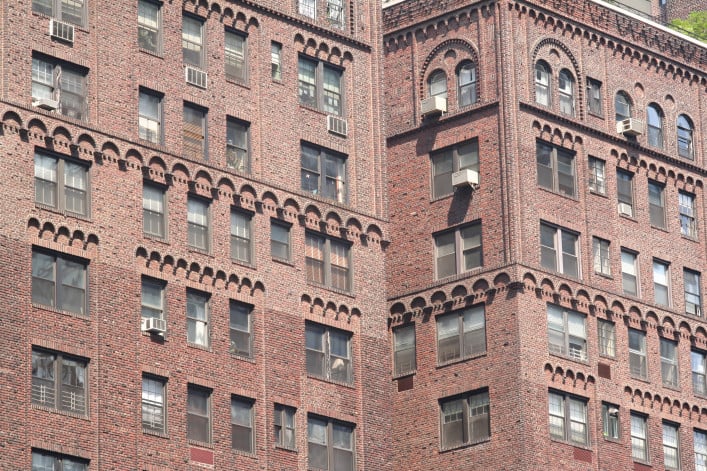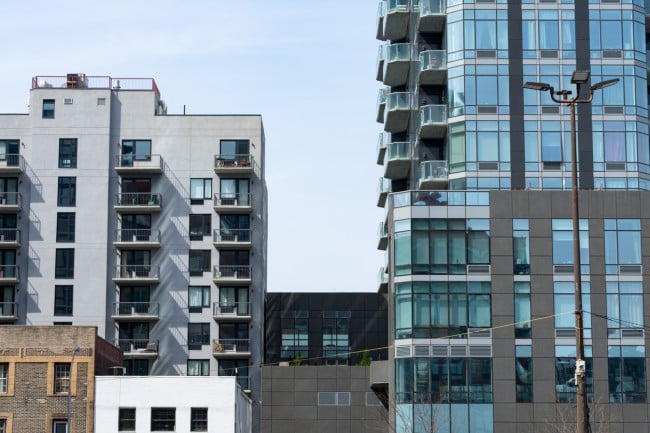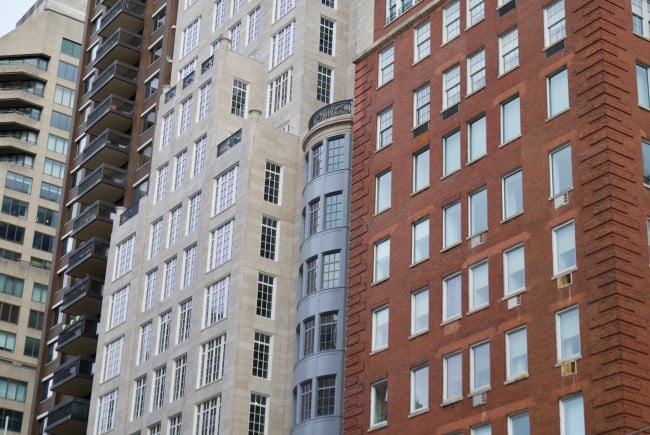How to read a NYC co-op or condo building’s financial statement
- Compare two or three years to see if the building’s financials are the same, better, or worse
- Identify the current capital projects as well as repairs and upgrades done in the recent past

A financial statement offers a snapshot of a co-op or condo building's financial health.
sx70 via Getty Images
When you’re buying a co-op or condo in New York City, an important part of your due diligence is to look at a building’s financial health. Your starting point is reading the financial statement, which every board is required to prepare and share with potential residents.
Of course, this document is not the most fascinating read. So you may be relieved to know that the responsibility for making sense of it will fall largely on your real estate attorney once you’ve put in an offer. And your attorney will also want to speak with board members directly and read the minutes to grasp the full lay of the land. For additional reassurance, you might also want to get your accountant or financial planner to look at the numbers.
Still, you can take a look at the financial statement at any point in the process to help figure out how much to bid and streamline communications with your legal counsel (as an informed client). Reading the fine print might also give you an indication of whether a lender will approve your mortgage application.
That's even more important given recent changes to borrowing guidelines by Fannie Mae that have curtailed banks' willingness to lend if the building is deemed to have insufficient reserve funds to pay for structural repairs, among other risky scenarios.
[Editor's note: A previous version of this post was published in December 2021. We are presenting it with updated information for February 2023.]
So, what are the factors to look for in the financial statement? Consistency year over year, a healthy reserve fund, and whether or not there is any major work planned top the list. Ultimately, your findings will tell you if you might get hit with a large assessment in the near future (an all-too-common, post-purchase occurrence).
Below Brick walks you through the sticky points of a building's financial statement. Think of it as a map to ease your buying journey.
What are the basic components of a financial statement?
According to generally accepted accounting principles, every financial statement should include a balance sheet (assets/liabilities/equity), statement of operations (income and expenses), equity section, cash flow section, and notes. Some notes are required disclosures while others are for informational purposes only.
Elise Kessler, an attorney who leads the transaction practice at Braverman Greenspun, a NYC real estate firm specializing in cooperative and condominium law (and fyi, a sponsor), shares her approach.
"Your counsel should first look at the cash flow and determine whether the building is generating enough to pay its expenses, mortgage (if a co-op) or common charge loan (if a condominium), real estate taxes, reserve fund, and repairs and capital improvements," she says.
Because co-ops have a unique structure, Kessler lists the following additional questions to dig into:
When is the mortgage due? Is the current loan interest only, which means the entire principal balance will be due on the maturity date? Or is the building paying principal and interest? Interest rates are higher than they were a few years ago so it will cost more for a building to refinance.
Is there a commercial lease that contributes to the income of the building and if so, what is the term of the lease? Has the commercial tenant been paying rent? During Covid, many retail tenants and parking operators were closed and unable to pay rent.
Is the building planning any repairs/capital improvements and if so, how are they being funded? Is there sufficient working capital or reserves or will the building need to obtain financing?
Is there pending litigation and if so, is the building being defended by insurance counsel? What is the potential liability?
What is the building’s history of maintenance/common charges increases and/or assessments and are there increases and/or assessments planned for the future?
Does the building have a reserve fund and is it adequate? How is the reserve fund being funded? Is there a working capital fund?
Is there anything that would change the financial picture of the building?
Keep this in mind as you read the following deeper dive, with additional insight from other in-the-know pros.
What is the ratio of assets to liabilities?
A building’s financial statement typically opens with a list of assets, followed by a list of liabilities. You want to focus on current assets and current liabilities, says Michael Esposito, a certified public accountant at Wilkin Guttenplan who has decades of experience working with condos and co-ops in New York.
Often the building value of a co-op that was converted many years ago will be calculated in the low millions—this can be misleading because it is based on historical cost and depreciation that bears no resemblance to current market value.
Comparing current assets versus current liabilities gives you a better sense of the building’s cash flow—so that would be cash, receivables, and prepaid expenses versus accounts payable, any real estate tax abatements due, and accrued wages.
“You should have at least a 1:1 ratio, meaning you have enough current assets to meet your current liabilities,” Esposito says. This is typically called the working capital ratio.
Kessler substantiates that ratio, saying you should look at the building’s cash, escrows, reserves, etc. at the end of the year and compare that to the liabilities.
Is there a reserve fund?
A reserve fund is a co-op or condo’s rainy day fund—the money the building has in the bank if a structural issue is uncovered, such as if the roof starts leaking. It’s typically itemized on a financial statement as “other assets,” and the industry standard is to have three months of carrying costs in reserve or a quarter of the annual operating costs.
While reserve funds have always been important in signifying a well-run building, the collapse of the Surfside condo tower in Miami has sharpened lenders’ focus on the aging infrastructure of buildings and the importance of having money available to address any issues that arise. New guidelines from Fannie Mae and Freddie Mac prevent buyers from purchasing in buildings with reserve funds under 10 percent of the operating budget or where repairs have been deferred or unsafe conditions have been identified.
"Fannie Mae lenders are now asking managing agents to complete a very comprehensive building questionnaire and some managing agents/boards have been reluctant to respond to some of the questions due to liability concerns," Kessler says. "As a result, a Fannie Mae lender may refuse to lend if they are not satisfied with the answers to their questionnaire."
In practical terms, whereas condos were once allowed to show lenders a reserve study for a building, now that’s not going to be enough to satisfy the requirements for conforming loans. As a result, buildings may start increasing their maintenance or common charges to meet the new minimum reserve fund level.
To the untrained eye, details about the reserve fund might not be obvious in a financial statement. Sometimes it is rolled into the working capital fund. Attorney Shaun Pappas, partner at Starr Associates, says depending on the statement, you might not see anything. That’s when your attorney will need to take a look and figure out what the balance is.
“The buildings are really not generating income so the balance should be what the condo holds year to year, which sometimes gets increased by the fact that there are additional contributions over the years or monies held over from one year to the next,” Pappas says.
Are operating costs consistent year over year?
In general, Kessler says you should analyze the trends (i.e., review two to three years of financial statements) to see whether the building’s financials are the same or getting better or worse over time.
Ideally, you’ll see financials for the two most recent years. (If not, which could happen depending on when in the calendar year you’re buying, you can request a projected budget.)
How specifically expenses are itemized in this section of the statement will vary (some documents get into the nitty gritty in the notes section), but you’ll see line items for things like administrative expenses, operating expenses, and repairs and maintenance.
The main thing you’re looking for is consistency year over year. Obviously budgets increase and costs can increase, but the numbers from one year to the next should be fairly similar, within 2 percent. This is a hallmark of good management and reflects planning.
Pappas says boards spend a lot of time negotiating their service contracts and their insurance costs to keep finances consistent. As a prospective buyer, that’s what you want to see in the financial statement.
If there’s a significant increase in operating costs between one year and the next you’ll want to determine why, Pappas says. “Maybe there was a big capital improvement that was done, maybe there was an assessment made.”
What maintenance and repairs are itemized?
Under the cash flow analysis, you’ll find details of the money being spent on capital repairs. This will typically identify the capital projects that are being worked on as well as repairs and upgrades carried out in the recent past.
Tara King-Brown, an agent at Corcoran, says one of the biggest expenses for a co-op or condo is complying with Local Law 11, which deals with the facade. Finding out about repairs—including those proscribed by Local Law 11—is important.
“You need to know if you’ll be paying for that through an assessment or was it just done a year ago, in which case—hallelujah!—that’s a nice bonus for you as an incoming buyer,” she says.
If you see commitments, you’ll want to see how they will be funded. “Is the building going to refinance and increase the debt on the building?” Esposito asks.
Let's say a building is entering into a $2 million project and only has $1 million in cash reserves. The question then becomes whether it will cover the difference by charging a new assessment or refinancing to increase the debt––or drawing from an existing line of credit.
As Esposito explains it, a financial statement is a look at the past but it should also account for everything through the date the statement is issued. “If the building enters into a contract or a commitment for capital work by that date, such as an elevator, we have to disclose it,” he says.
How to interpret losses
It’s not uncommon for a building’s financial statement to identify losses. "This does not mean the building is in financial trouble but that your attorney needs to look at the entire financial statement to understand what's going on," Kessler says.
For example, in the case of an operating loss, a co-op can depreciate the costs of improvements, some of which were incurred years ago. Esposito posits this example: Let's say a building paid $1 million to update the elevator in 2015. The co-op would then depreciate that capital improvement over time, picking up a certain portion in each subsequent year. That is a legitimate expense.
The biggest thing, Esposito says, is seeing whether the maintenance is efficient.
“If you look at the financial statement and the building is generating large losses, that means its maintenance is not enough. The next year expenses go up but the maintenance is already short—you are going to see huge increases in maintenance,” he says.
So if a building had $1 million in operating expenses but only charged $900,000 in maintenance, and the next year the expenses go up to $1.1 million, that means there's a $200,000 shortfall to break even. "That's why I'm skeptical when I hear a building say it hasn't raised its maintenance in years. In general, unless it had unique ancillary income like significant commercial leases, you would think every building would have some sort of increase in maintenance."
What do the notes tell you?
The notes are what King-Brown calls a “gold mine” of information. This section will explain some of the numbers you’re trying to make sense of and also add some color about the building. For starters, the notes tell you the year the co-op or condo was founded. If it’s young, you’ll want to figure out if the board is used to running a building. Has the building settled and construction quirks been worked out?
The notes can also tell you if the building is involved in any litigation. This might not necessarily be a deal breaker, but you’ll want to know what it’s about and the amounts involved. For example, King-Brown asks, “Has someone slipped and fallen and is suing the building? If so, is there proper insurance for that?”
Other times you might have someone who is not paying rent and you’ll want to know that.
Other information in the notes might relate to commercial space owned by a co-op. King-Brown says if retail space is owned by a co-op, it means the shareholders are getting the income from the lease.
“If that lease is Chase and they just renewed at the market rate that’s probably having a very positive impact on the financial health of the building so you might have less carrying costs as an owner,” she says.
On the flip side, Esposito points to an ongoing trend where a commercial lease was covering a significant portion of the operating cost and that's not necessarily the case anymore. "I have buildings that lost seven figures in rent and had to impose big maintenance increases because the money has to come from somewhere."
And if the building's mortgage is coming due, Esposito cautions that debt could potentially double due to higher interest rates depending on the initial terms.
Note that an audited financial statement is the highest level of service and would give you the highest comfort level. According to Esposito, most bylaws require them—including in a four-unit condo where the owners have known each other for years.
However, he once worked with an eight-unit co-op in Brooklyn that didn’t have a mortgage for years, and didn’t necessarily see the need for an audited statement.
Keep in mind that it's not just about your own comfort level. Lenders often require audited financial statements before signing off on a mortgage, and that's knowledge you can take to the bank.
—Earlier versions of this article contained reporting and writing by Mimi O’Connor.
You Might Also Like




























